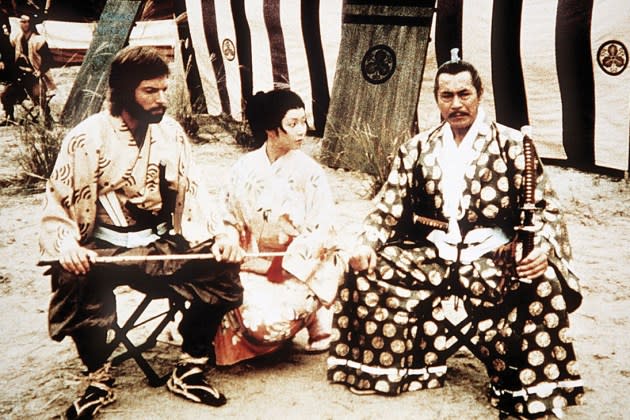Hollywood Flashback: How the 1980 ‘Shogun’ Was Pretty True to Japan

Paramount Television’s Shogun was arguably the original international event series. The five-part TV adaptation of James Clavell’s sprawling 1975 novel of the same name became a pop culture sensation when it aired on NBC in 1980, winning an Emmy for outstanding limited series and the Golden Globe for best television series in the drama category.
Much like FX and Hulu’s updated Shogun adaptation released in February, the original limited series was an enormous swing, in terms of both budget and production values. Starring Richard Chamberlain and Japanese screen icon Toshiro Mifune, the show’s six-month Japan shoot was initially budgeted at $12 million but swelled to $22 million ($83.7 million in today’s dollars), becoming the most expensive TV series ever made at the time. Some aspects of the original haven’t aged so well — THR‘s review noted how it was difficult for the show’s Japanese cast to “emerge as much more than scowlers,” thanks to the decision not to translate any of the Japanese dialogue, which in turn centered the story exclusively on the perspective of Chamberlain’s Western character — but the show’s visual re-creation of feudal Japan was peerless. To date, the 1980 version remains the only American TV show to have filmed entirely on location in Japan (the FX adaptation shot in Canada to make use of a tax break). The show featured hundreds of Japanese extras and benefited from local expertise in its creation of period-accurate sets, costumes and cultural details. Costume designer Shin Nishida would become the first Japanese artist to win an Emmy for outstanding costume design, and THR‘s review singled out several other Japanese crew — set decorator Shoichi Yasuda, art director Yoshinobu Nishioka and makeup artist Masato Abe — for their contributions to Shogun‘s “grand viewing experience.”
More from The Hollywood Reporter
Justin Marks and Rachel Kondo, co-creators of the 2024 Shogun, have won plaudits for righting the wrongs of the earlier rendition by illuminating the inner worlds of the Japanese characters. But the duo’s approach also began with getting the ravishing visual details of period Japan right. “Our strategy was pretty simple,” Kondo told THR earlier this year: “Empower the people who actually know what’s authentic, and then listen to them.”
This story first appeared in a June standalone issue of The Hollywood Reporter magazine. Click here to subscribe.
Best of The Hollywood Reporter